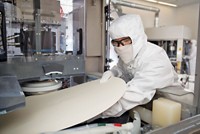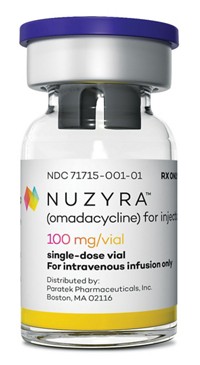Advertisement
Grab your lab coat. Let's get started
Welcome!
Welcome!
Create an account below to get 6 C&EN articles per month, receive newsletters and more - all free.
It seems this is your first time logging in online. Please enter the following information to continue.
As an ACS member you automatically get access to this site. All we need is few more details to create your reading experience.
Not you? Sign in with a different account.
Not you? Sign in with a different account.
ERROR 1
ERROR 1
ERROR 2
ERROR 2
ERROR 2
ERROR 2
ERROR 2
Password and Confirm password must match.
If you have an ACS member number, please enter it here so we can link this account to your membership. (optional)
ERROR 2
ACS values your privacy. By submitting your information, you are gaining access to C&EN and subscribing to our weekly newsletter. We use the information you provide to make your reading experience better, and we will never sell your data to third party members.
Programs
ACS celebrates its 2020 Heroes of Chemistry
Chemists are honored for their contributions to cataract surgery, water purification, semiconductor fabrication, and treatment for multidrug-resistant tuberculosis
by Linda Wang
October 31, 2020
| A version of this story appeared in
Volume 98, Issue 42
Industrial scientists from AST Products, DuPont Electronics & Imaging, DuPont Water Solutions, and Janssen Research & Development are being recognized with the American Chemical Society’s 2020 Heroes of Chemistry Awards. These researchers’ contributions have led to advancements in cataract surgery technology, semiconductor fabrication, water purification, and treatment for multidrug-resistant tuberculosis.
Started in 1996, the Heroes of Chemistry Awards are ACS’s highest honor for industrial chemical scientists, who make up about half of ACS’s membership. The recognition program, which is sponsored by the ACS Board Committee on Corporation Associates, celebrates industrial advances that have benefited humankind.
Here’s a look at the commercial products being honored this year:
AST Products: LubriMATRIX surface treatment technology

To shorten patients’ recovery time after cataract surgery, artificial lenses can be implanted using a syringe that creates just a small incision in the eye. These artificial lenses are folded up “like a taco” inside an injection cartridge, and the challenge is to push the lens out through the syringe without the lens getting scratched or damaged, says William Lee, vice president of R&D and regulatory affairs at AST Products and one of the award winners.
To protect the lens as it is being released from the cartridge, Lee and his colleagues developed a surface treatment technology called LubriMATRIX. Using a chemical polymerization process, the researchers graft a coating consisting of a hydrophilic polymer and a lubricious polymer onto the inner wall of the injection cartridge. This coating helps eliminate friction, allowing the lens to slide out of the syringe without getting scratched or jammed inside the cartridge. Additionally, the coating is biocompatible, does not rub off onto the lens, and can withstand the high temperatures involved in sterilizing the cartridges in an autoclave.
Lee says he and his colleagues tested hundreds of different formulations before they arrived at the coating that not only gave them the properties they sought but could also withstand the autoclave. “The whole team was very happy about it. We finally got something,” he says. The first generation of LubriMATRIX-treated intraocular lens injectors received US Food and Drug Administration approval in 2012. According to AST Products, by the end of 2019, LubriMATRIX was used in more than 4.5 million intraocular lens injectors annually.
“Being an industrial chemist is rewarding because you are solving real-world problems, such as how to make cataract surgery safer and more efficient,” Lee says. He and his colleagues are now working on new generations of surface treatment technologies and intraocular lens injection systems.
DuPont Electronics & Imaging: Chemical-mechanical planarization pads

The fabrication of modern-day semiconductors involves a technique called chemical-mechanical planarization (CMP). “CMP essentially allows each layer of the chip to be polished to create a planar surface so the next layer of the microchip can be built,” says Drew Chambers, a marketing director for DuPont’s CMP Technologies business.
Scientists from DuPont Electronics & Imaging are being recognized for their work leading to the commercialization of many generations of CMP polishing pads, which has enabled the evolution of the semiconductor industry. To manufacture devices with increased speed and performance, more layers of the wafer must be polished, says Bainian “Brian” Qian, a principal investigator in the CMP Technologies business and one of the award winners.
“DuPont’s customers in the semiconductor space are really starting to push the limits of material science to create microelectronics with higher memory capacity and faster speeds,” Chambers says. “Our customers are bringing in a wide variety of different metals and oxide films to make these next-generation devices. The challenge was to make sure we could make a variety of pad material properties that would be able to polish both these unique oxide and metal films with very different polishing requirements.”
“We have to innovate almost in real time to meet their needs,” Qian says, adding that the work is extremely gratifying. “It’s humbling to see all the things we are doing to make an impact on society.”
DuPont Water Solutions: FilmTec nanofiltration membranes

One of the biggest challenges in treating wastewater is selectivity. How do you remove certain dissolved solutes, such as calcium, iron, antibiotics, and pesticides, while retaining other solutes, such as chloride? Whereas reverse osmosis membranes filter out virtually all solutes, nanofiltration membranes have a higher degree of selectivity, says Steven Jons, R&D fellow with DuPont Water Solutions and one of the award winners.
The winners
AST Products
William Lee
DuPont Electronics & Imaging
William “Bill” Budinger
Marty DeGroot
David James
Mary Jo Kulp
Harry “George” McClain
Bainian “Brian” Qian
John Roberts
DuPont Water Solutions
Tina Arrowood
Steven Jons
Steve Rosenberg
Janssen Pharmaceutical Companies
Koen Andries
Jérôme Guillemont
Anil Koul.
The DuPont team is being honored for its work in developing nanofiltration membranes for a variety of commercial applications, including purifying municipal drinking water, increasing offshore oil production, separating dairy products, and recycling waste streams. The technology is part of DuPont’s FilmTec portfolio, which also includes a line of reverse osmosis membranes.
In India, DuPont’s nanofiltration membranes treat waste streams from multiple textile plants and recover the salt. “One of the things we’re able to do with the nanofiltration membranes is to separate the waste stream into components, passing the water and sodium chloride through the membrane, while rejecting the dyes and other components you would like to dispose of. That gives you an opportunity to recycle the water, but you can also recycle the salts back to the dyeing processes as well,” Jons says.
DuPont’s nanofiltration membranes are also being used to treat seawater in offshore oil production. Seawater can be injected into the ground to push out the oil, but its sulfate ions can combine with barium to form barium sulfate deposits, which over time can damage the reservoir. The DuPont team is using a nanofiltration membrane to remove the sulfate from the seawater while retaining sodium chloride.
“We are also exploring how current and new membranes can be used in DuPont’s own plants to segregate components in waste streams and recycle our valuable solvents back to the process,” Jons says. “The world is full of opportunities for separation of species and removal of specific components, all those things are done by selective membranes. I’m really excited for the near future where I expect continued growth in process applications and in producing clean water, but also in recycling valuable materials from our waste streams. And that’s good to be a part of.”
Janssen Pharmaceutical Companies of Johnson & Johnson: Sirturo (bedaquiline)

Multidrug-resistant tuberculosis is especially challenging to treat because the disease is resistant to first-line treatments such as isoniazid and rifampicin. Led by medicinal chemist Jérôme Guillemont, the team at Janssen developed the drug bedaquiline, which selectively targets mycobacterial adenosine triphosphate (ATP) synthase by cutting off the pathogen’s energy supply without interacting with human ATP synthase. The compound is isolated from a mixture of four isomers and is the most active stereoisomer against several strains of mycobacteria.
The discovery of bedaquiline, which is part of the diarylquinoline class of compounds, involved a bit of serendipity. In 1996, Guillemont was leading a project to study the anti-inflammatory properties of quinoline and quinolinone derivatives. A side product that formed during a synthesis of a quinolone showed activity against Helicobacter pylori, which led Guillemont to produce more than 200 analogs of the compound. One of the analogs was bedaquiline.

“That was an unknown class of compounds in the literature at that time,” Guillemont says. The compound was later shown to have high potency against Mycobacterium tuberculosis. Janssen began research and development on bedaquiline around 2000.
The US FDA approved bedaquiline, marketed as Sirturo, Dec. 31, 2012, to treat multidrug-resistant tuberculosis. It was the first new tuberculosis drug in more than 40 years.
Nominations are being accepted for the 2021 Heroes of Chemistry Awards. The deadline for submissions is Feb. 1, 2021. For more information, visit www.acs.org/heroes or email chemhero@acs.org.





Join the conversation
Contact the reporter
Submit a Letter to the Editor for publication
Engage with us on Twitter